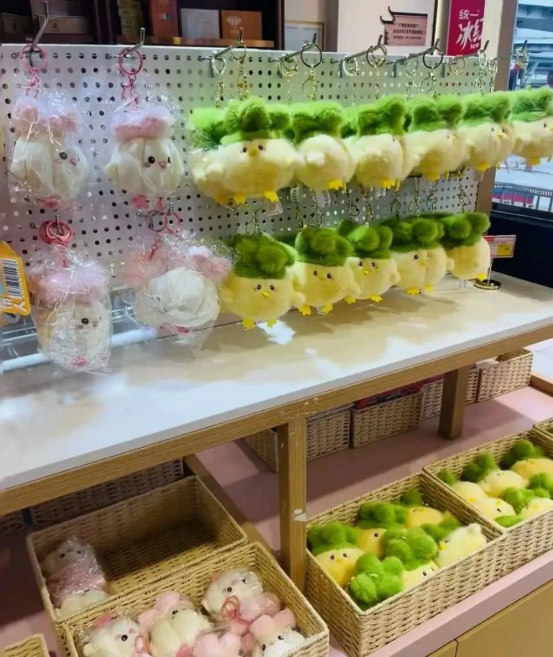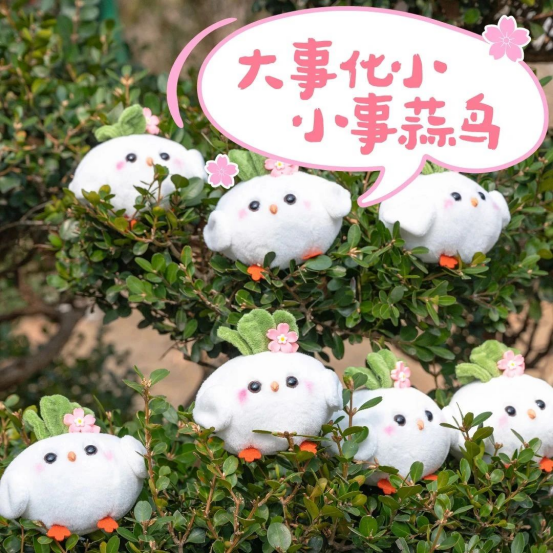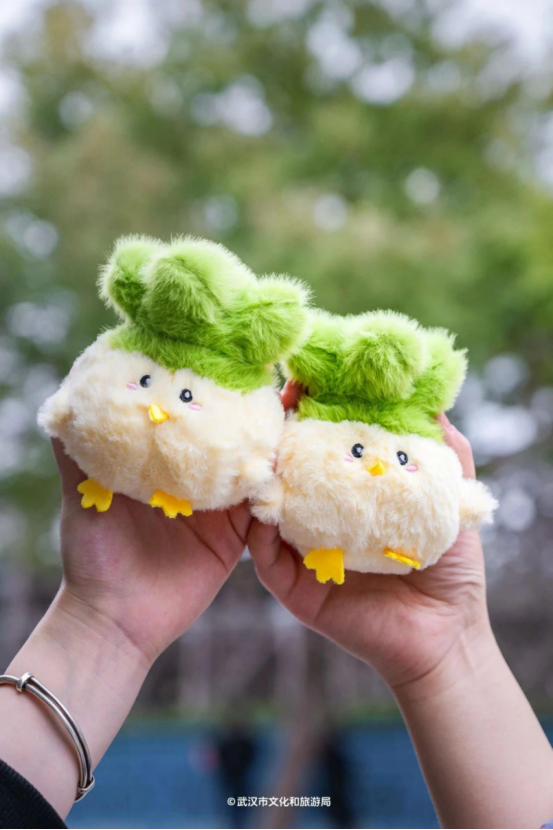“Garlic bird, garlic bird ~ it’s not easy~.” Recently, the “Garlic Bird,” also known as the “Wuhan Peace Bird,” a little plush toy with a garlic-shaped head, has become a trending sensation both online and offline, often selling out in stores.


"Garlic bird" plush toy. By Gong Liankang, Xinhua News Agency
The plush “Garlic Bird” has a round chubby body, blushed cheeks, and an innocent, clueless expression—its cute and funny appearance is a big reason for its popularity. What’s even more clever is that when you squeeze its belly, it plays a voice recording: “Garlic bird, garlic bird, it’s not easy.” In the Wuhan dialect, “Garlic Bird” is a homophone for “never mind”, meaning “forget it” or “let it go.” When placed in the broader Mandarin-speaking context, the dialect’s charm combined with the homophonic pun makes it instantly catchy, easy to remember, and highly shareable.
As a result, many people have turned this phrase into a personal catchphrase, created memes with it, or used it as background music in short videos, often as a playful way to mediate conflicts. The collective creativity of the internet also feeds back into reality. For example, when the “Garlic Bird” memes are used in conversations, they not only express emotion but also serve as unconscious marketing. Meanwhile, the iconic voice clip naturally fits short video formats, reinforcing both the content and the product in a cycle of mutual promotion.

Many netizens compare “Garlic bird, garlic bird, it’s not easy” to other popular comforting phrases like “It’s the New Year, take it easy” or “Life is tough for everyone.” It resonates with young people who relate to the life philosophy of “take a step back, and the world becomes wider.” By squeezing its belly, the phrase “Garlic bird, garlic bird” seems to become life’s automatic background music—bringing a mix of humor, comfort, and healing in moments of frustration, allowing for an emotional exchange and instant psychological relief.
Whether in consumption or social interaction, emotional value has become a core motivator for many young people. Regardless of whether something is niche or innovative, or of what field or type it belongs to, people seek a sense of belonging and recognition while also pursuing individuality and self-pleasure. From the stress and tension of reality, they need a controlled, harmless outlet for emotional release. The “Garlic Bird” attitude embodies this mindset while meeting consumers’ emotional needs. Once a product carries emotional meaning and creates interactive experiences in daily life—even becoming a “spokesperson” for one’s feelings—it’s easy to see how it can grow into a trend.

Moreover, this fusion of dialect and emotion in the “Garlic Bird” has successfully carried the “wind of longing” beyond Wuhan, serving as a cultural and folkloric export of the city, and even inspiring many to learn about Wuhan or travel there. Looking back at the news, it’s clear that dialect-based creative products are not rare. However, many of them only rely on static printing of dialect phrases, or their meanings fail to resonate with outsiders.
What makes the “Garlic Bird” different is that while it is rich in local character, it’s also a high-frequency phrase widely used by locals that directly connects with non-locals’ linguistic habits and emotional thinking. The simple interaction of squeezing its belly to hear the voice makes emotions in daily life and social interaction more tangible, allowing the product and culture to integrate into everyday living. How to sustain this kind of cultural creativity, keep it relevant in daily life, and enrich a city’s cultural promotion—the design of the “Garlic Bird” offers valuable insights.
Declaration: This article comes from Guangming Daily.If copyright issues are involved, please contact us to delete.